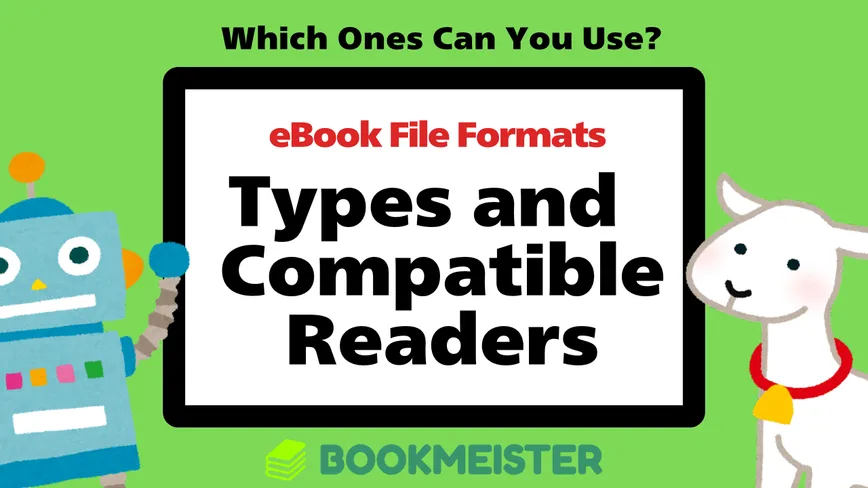
Types of eBook File Formats and Compatibility with eBook Readers
Even though we call them eBooks, they are distributed and sold in various file formats. In this article, we summarize the main eBook file formats and the eBook readers and devices compatible with them.
Modified at: 2025.9.11Posted at: 2022.9.26
Are eBook File Formats Important?
When it comes to individually sold or free-distributed eBooks, the file format determines which eBook readers can display them. Therefore, we can say that file format is crucial.
However, when purchasing eBooks through platforms such as Amazon or Rakuten, due to rights management, readers generally need to use a dedicated eBook reader or an app. In that sense, it is not an exaggeration to say that “eBook file formats are, in a way, irrelevant.”
Main Types of eBook File Formats
EPUB (.epub)
EPUB (Electronic Publication) is an eBook format announced by IDPF in September 2007, with the extension .epub. Since it is an open standard based on XML, it has the advantage of avoiding vendor lock-in.
As a file, it consists of documents marked up with XHTML or DTBook, along with related images and CSS, compressed into a single ZIP file. This offers high flexibility and makes file conversion relatively easy, which is why it is often used when converting for different eBook readers.
Since Amazon enabled EPUB support with its “Send to Kindle” feature, EPUB has a high possibility of becoming the future standard.
PDF (.pdf)
A document format developed by Adobe. In the past, Adobe Acrobat was required to create or edit PDF files, but nowadays many software and apps can output in PDF format. Moreover, PDFs can be viewed in web browsers and file browsers, and are supported by almost every operating system. This makes PDF a “super versatile format.”
MOBI (.mobi)
MOBI was originally developed by France’s Mobipocket as the dedicated format for its Mobipocket Reader. Later, it was acquired by Amazon, making it available on Amazon Kindle as well.
However, starting from late 2022, Amazon excluded MOBI from the supported formats for its “Send to Kindle” feature, leading to its gradual phase-out.
AZW (.azw)
AZW is Amazon Kindle’s dedicated format, developed based on the acquired MOBI format. Basically, eBooks purchased from Amazon are in AZW format. It is also known as Kindle Format 7.
Additionally, there is Kindle Format 8 (AZW3), which complies with EPUB3, as well as Topaz, a newer format adopted since the end of 2008. It remains unclear which format will become dominant for Amazon’s eBooks.
Compatibility of eBook Readers with File Formats
Lastly, let’s take a look at the compatibility of major eBook readers with different file formats.
| Reader | EPUB | MOBI | AZW | |
|---|---|---|---|---|
| Amazon Kindle | ○ | ○ | ○ | ○ |
| Rakuten Kobo | ○ | ○ | ○ | - |
| BOOX | ○ | ○ | ○ | Kindle app only |
| iPhone/iPad | App | ○ | App | Kindle app only |
| Android | App | ○ | App | Kindle app only |
Originally, Amazon Kindle did not support EPUB, but starting in 2022 they added support via “Send to Kindle,” making it the eBook reader with the widest format support.
Surprisingly, Rakuten Kobo also performs well, supporting all formats except for Amazon’s exclusive AZW.
The e-paper Android tablet BOOX also supports all formats through apps. Similarly, iPhones and Android smartphones can display almost all formats via apps, but AZW specifically requires the Kindle app.